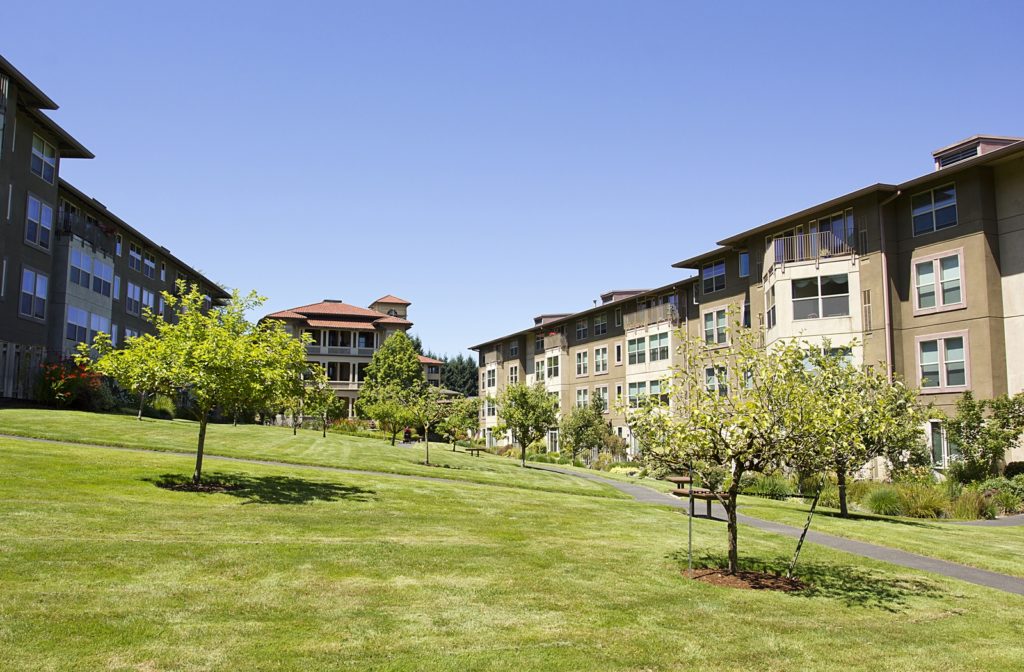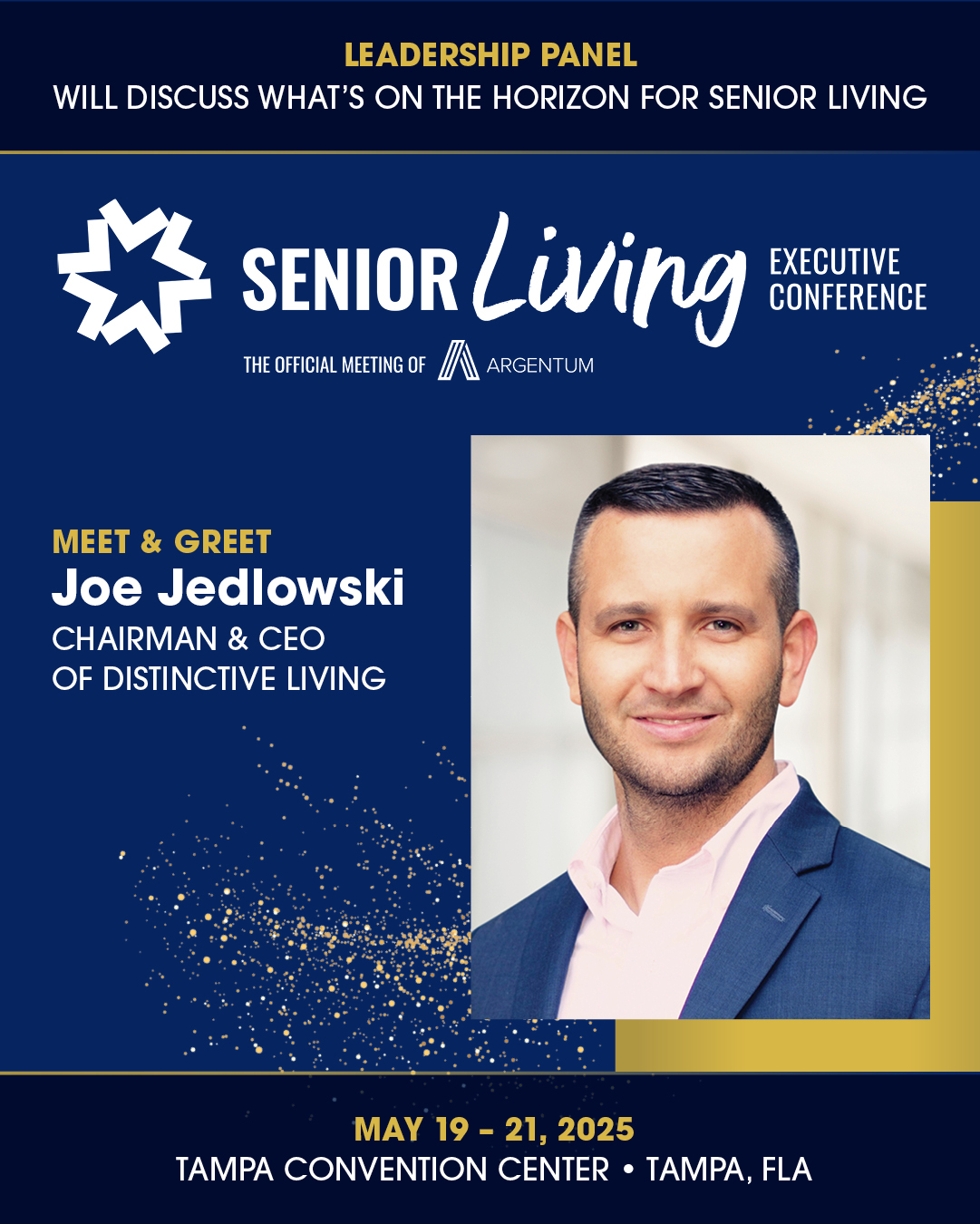It’s no secret that as we age, our needs and desires change. Now more than ever, seniors are looking to take advantage of the many opportunities urban living has to offer while residing in a senior community, from multi-generational spaces to accessibility to mental health services.
There are 7 main senior community trends we will focus on now and in the future. These include:
- Nature-Infused Interiors
- Wellness Oriented Communities
- Sustainability & Eco-Friendly
- Smart Technology Integration
- Multi-Generational Spaces
- Personalized Living Spaces
- Minimalization
With this shift in demographics come changes in urban planning trends for independent senior living communities that simply weren’t thought about in the past. Let’s explore these senior community and urban planning trends and what they mean for us in 2024!
Nature-Infused Interiors
With an increasing focus on health and wellness, senior communities are looking towards nature-infused interiors to promote relaxation, calmness, and healing. Incorporating elements of nature into the design of senior living spaces has been shown to reduce stress, lower blood pressure, and improve moods.
From wood finishes and natural materials to indoor gardens and green walls, these elements help seniors reconnect with nature and provide a sense of peace and tranquility. Whether it’s through views of landscaped gardens or the sound of a bubbling water feature, nature-infused interiors have become a popular trend in senior living design.
It’s a great way to create a welcoming and rejuvenating atmosphere for older adults to enjoy their golden years.
Wellness Oriented Communities
As our loved ones age, we want nothing more than for them to live happy, fulfilling lives. That’s where wellness-oriented senior communities come in. These communities prioritize the physical and mental well-being of their residents, offering a multitude of opportunities for exercise, socialization, and personal growth.
These communities offer a range of resources designed to address the unique needs of older adults, including counseling services, support groups, and recreational activities that promote socialization and engagement.
From daily fitness classes to engaging workshops and programs, these communities cater to every aspect of a senior’s health and happiness. Plus, with a supportive community of like-minded individuals, seniors can find friendship and social connection in their golden years.
Sustainability & Eco-Friendly Focus
Senior communities that prioritize sustainability and eco-friendliness aren’t just good for the environment; they’re also great for the residents who call them home. By implementing energy-efficient technologies, composting programs, and sustainable landscaping, these communities not only reduce their carbon footprint but also foster a sense of community and well-being among their residents.
Seniors who live in these communities can enjoy fresh fruits and vegetables from community gardens, take part in environmentally-focused events, and benefit from reduced utility costs. Plus, by choosing to live in an eco-friendly community, seniors are taking an active role in preserving the planet for future generations.
It’s a win-win situation that we can all feel good about.
Smart Technology Integration
As technology continues to advance at a breakneck pace, it is becoming increasingly important to integrate smart technology into senior communities. This technology can help improve the quality of life of seniors in several ways, such as automating tasks that were once difficult or impossible to perform without assistance, providing essential health and wellness insights in real-time, and making it easier to stay connected with friends and loved ones.
Whether it’s through voice-activated assistants or smart home systems that can be controlled remotely, seniors are experiencing a newfound sense of independence and convenience thanks to the integration of smart technology.
With the added security and safety measures that come with these systems, it’s no wonder that more and more senior communities are embracing smart technology as a means of enhancing the lives of their residents.
Multi-Generational Spaces
Senior communities have been evolving to meet the needs of an aging population. That includes the creation of multi-generational spaces where residents can enjoy the company of their children, grandchildren, and even great-grandchildren. These spaces are designed to promote intergenerational relationships and provide a sense of community that is open to all ages.
Whether it’s a playground surrounded by small homes, a library with children’s reading rooms, or a community garden tended to by people of all ages, these spaces allow seniors an opportunity to pass on their wisdom and experiences to the next generation while staying engaged in the community.
Not only do these multi-generational spaces foster socialization and reduce isolation in seniors, but they also allow families to come together and build new memories that will last a lifetime.
Personalized Living Spaces
As we age, it’s vital that we feel comfortable in our living spaces. That’s why personalized living spaces in senior communities are becoming more and more common.
Personalized spaces allow older adults to feel more at home in their surroundings. It’s all about creating an environment that’s tailored to the individual’s tastes and needs. These can include anything from the color scheme and furniture layout to the inclusion of personal mementos and photos.
Personalized spaces can also promote a sense of independence and autonomy, something that’s incredibly important for seniors. All in all, personalized living spaces are a wonderful way to help older adults feel more at ease in their living environment and more connected to the world around them.
Minimalization
As people age, many find themselves looking to downsize and simplify their lives. This desire for minimalization (not minimization!) can be seen in the growing popularity of senior communities that promote a simpler, more streamlined lifestyle. These communities often offer a range of amenities, from on-site healthcare to organized social events, but they also prioritize practicality and efficiency.
Residents are encouraged to embrace a minimalist mindset, focusing on what they truly need and value in their daily lives. By taking a more intentional approach to their possessions and activities, seniors can enjoy greater peace of mind, improved quality of life, and a stronger sense of community connection.
So whether you’re already a minimalist or just starting to explore the benefits of senior living, a minimalistic senior community could be the perfect place to call home.
Check Our Communities Out
We understand that each person’s needs are different when it comes to living comfortably and have made sustainability, eco-friendliness, and minimalization priorities in the design process of our homes.
At Distinctive Living, we strive to provide an incomparable lifestyle experience for everyone who visits. Take advantage of this opportunity to live in one of the most innovative residential developments in the nation! Reach out to us at Distinctive Living for more information and to book a tour today!




